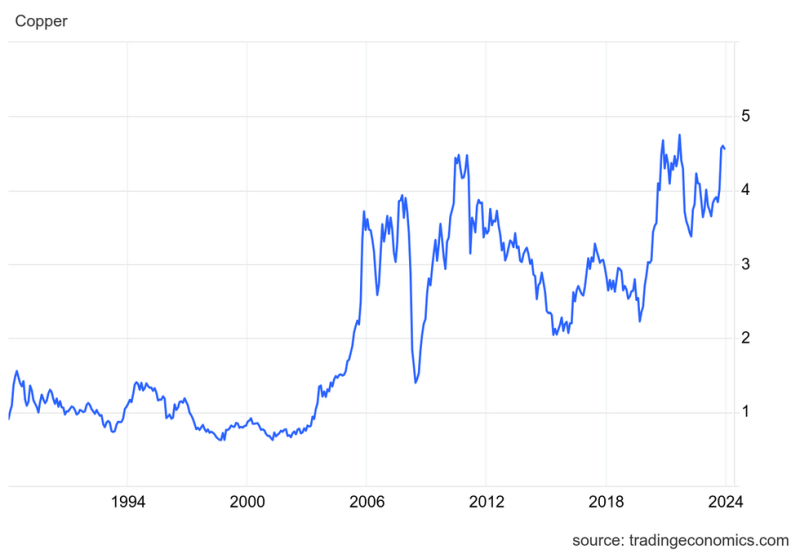**Exploring the Fluctuating Trends of Historical Copper Prices**
As a vital industrial metal with a wide range of applications, copper has played a crucial role in global economic activities over the centuries. By delving into the historical trends of copper prices, we can gain insight into the various factors influencing its value and the dynamic nature of the market.
**Overview of Historical Price Trends**
The historical data on copper prices depicts a fascinating journey of highs and lows, influenced by a multitude of economic, geopolitical, and technological factors. From the ancient civilizations that first discovered the metal to the modern era of global trade and industrialization, copper has maintained its intrinsic value and demand.
**Early History of Copper Prices**
In ancient times, copper was considered a precious metal due to its scarcity and unique properties. The pricing of copper was largely determined by its availability, with fluctuations occurring in response to mining discoveries, trade routes, and changing demand patterns. As civilizations advanced, the demand for copper grew, leading to fluctuations in its pricing.
**Industrial Revolution and Modern Era**
The Industrial Revolution marked a significant turning point in the history of copper prices. The increased demand for copper in industries such as manufacturing, construction, and electrical transmission led to a surge in its value. Technological advancements further boosted the demand for copper, especially in the electronics and telecommunications sectors.
**Globalization and Market Dynamics**
In the modern era of globalization, copper prices have become more interconnected with global economic activities. Factors such as supply chain disruptions, trade policies, and currency fluctuations have a profound impact on the pricing of copper in international markets. The development of futures markets and the increasing influence of speculators have also added a layer of complexity to copper price dynamics.
**Challenges and Opportunities**
Despite its enduring value, copper faces challenges such as market volatility, geopolitical uncertainties, and environmental concerns. The push towards sustainable and eco-friendly practices in mining and manufacturing is reshaping the copper industry and influencing its pricing trends. However, with the increasing demand for renewable energy technologies and electric vehicles, copper is poised to play a crucial role in the transition towards a cleaner and more efficient future.
**Conclusion**
In conclusion, the historical trends of copper prices reflect the intertwined relationship between human activities, technological advancements, and economic forces. By studying the evolution of copper pricing over the centuries, we can gain valuable insights into the past, present, and future dynamics of this indispensable metal in the global economy. Understanding the factors driving copper prices is essential for navigating the complexities of the market and harnessing the opportunities presented by this versatile and resilient metal.
